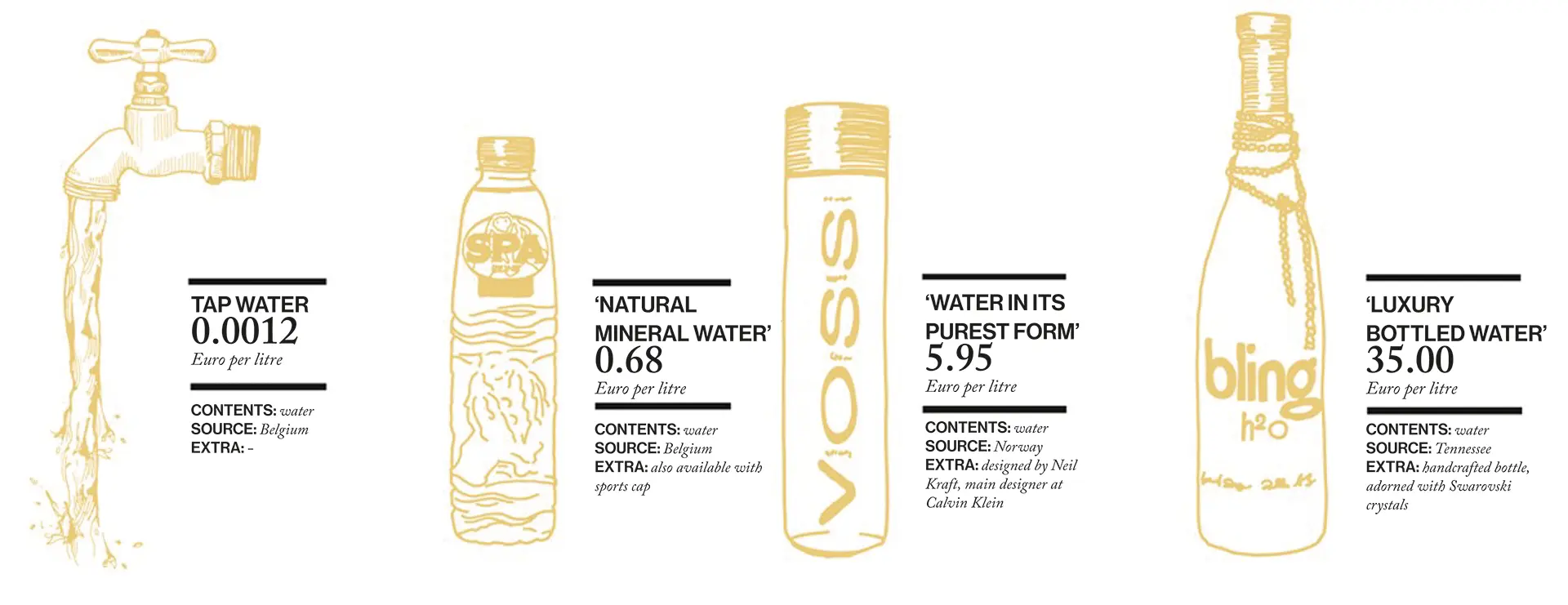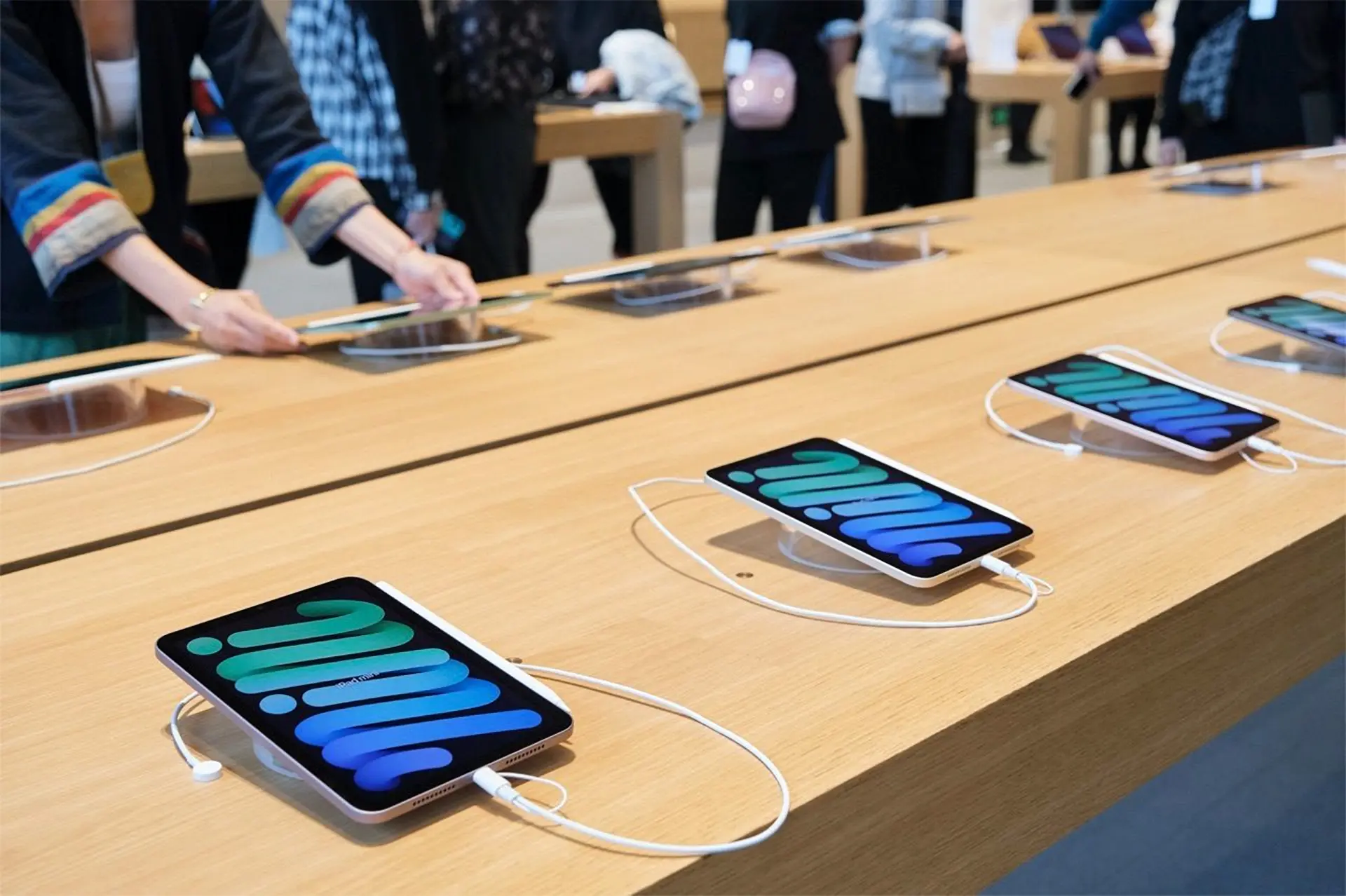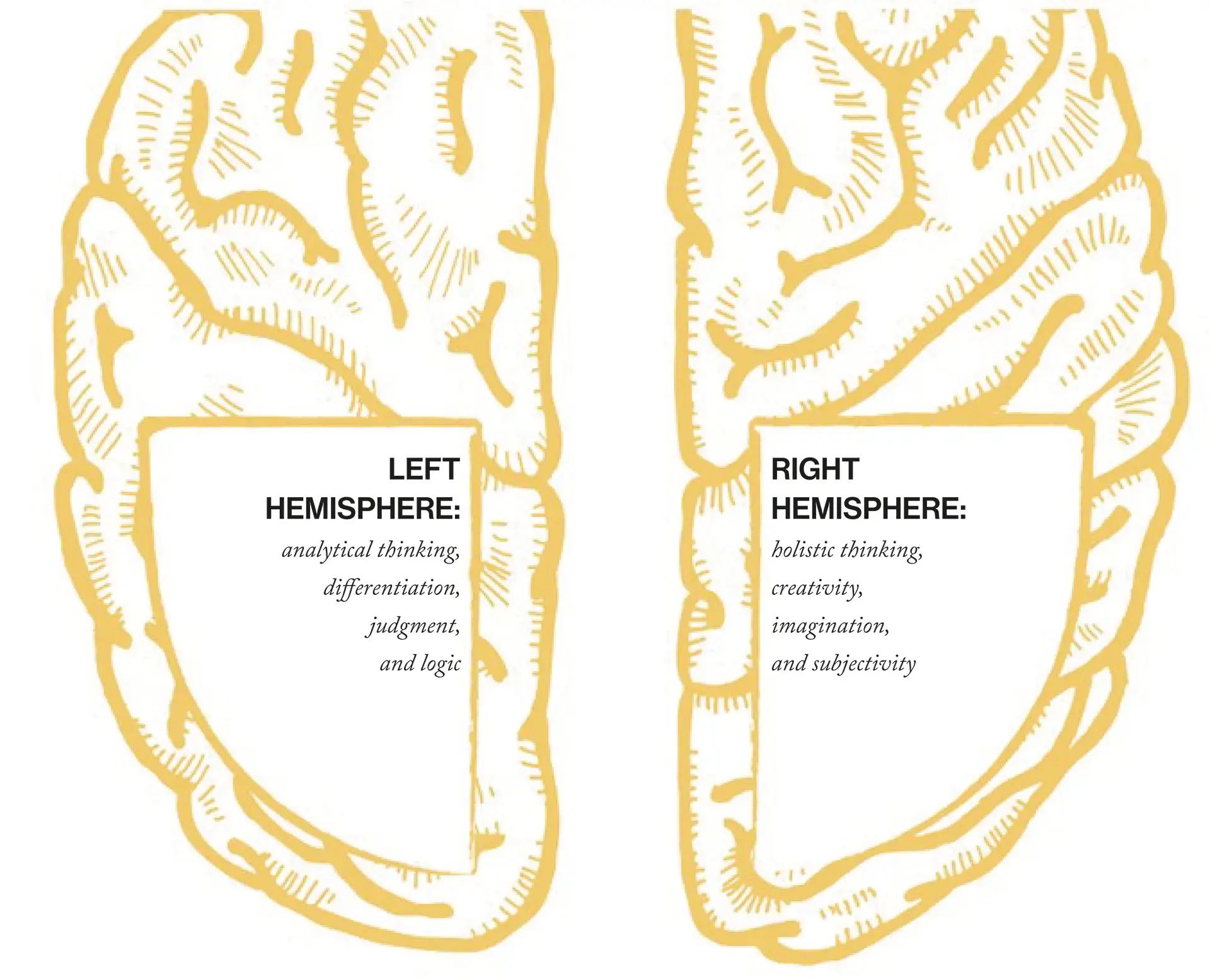Creating an iconic retail formula is an art in and of itself. Retail design plays an essential role in this: a well-executed retail design is, in fact, the secret behind successful retail formulas. How does it work?
The power of design
Design goes beyond mere appearance; it brings a brand’s thoughts and strategies to life. It distinguishes what is visible, tangible, and even intangible.
“Design is not just how it looks and feels; design is how it works.”
– Steve Jobs
Design…
- … creates differentiation between products and can stimulate brand preference.
- … adds value to a generic product.
- … appeals to our emotions and shapes our first impression; it aids in preselection.
- … helps us make choices in the current era of information and product overload.

Consider water, a generic product: available in jerry cans, 1-litre, 2-litre, or 3-litre bottles, small bottles, or as premium brands. As you can see from the example, design adds value to a generic product and creates brand preference, which shoppers are willing to pay more for.
Retail design as seduction
Retail design brings the brand to life; it gives form to the imagination of the brand’s identity, market position, and showcases its driving ambition. When well-designed and developed, the consumer feels the brand in every touchpoint of the customer journey. This includes the store, in-store communication, presentation, service level, staff behaviour and interaction, and the connection between the brand, staff, and customers, as well as among customers themselves. As a customer, you become a part of everything the brand stands for. If done properly, you take that experience home, talk about it, and become an ambassador. It gives your retail concept a unique and authentic character, allowing shoppers to experience what your brand represents. Additionally, it’s important to realize that the art of seducing the consumer is continuously evolving. Consumer needs are not static: in our dynamic industry, constant new and different solutions are required to meet these needs and even surpass them.
Design for the consumer
In addition to the changing consumer needs, we know that consumers often base their choices on underlying emotions and instincts. These cannot be rationalized. The subconscious plays a crucial role in making purchase decisions and evaluating brands and products. The intangible aspect of design and experience is just as important as the visible aspect. They stimulate the senses and determine how someone feels and behaves, often having a greater impact on purchasing behaviour and the in-store experience than initially expected.

Every morning, Apple employees position iPads, MacBooks, and iPhones at an exact angle, enticing shoppers to touch the products to see them clearly. They do this for a reason; neurological research shows that 66% of shoppers who touch a product also buy it.
This is related to the right hemisphere of the brain, allowing shoppers to perceive the retail formula as a holistic entity. They sense when something feels right or wrong. Retail design often tends to focus primarily on rational values, focussing on the left hemisphere, but it’s important to also consider the right hemisphere and incorporate the intangible elements into the overall experience and evaluation of your brand. By bringing all these elements together, you restore the balance between the head and the heart.

The secret behind successful shopping experiences
In short, retail design goes beyond creating a visually appealing store. It is simply the way to showcase your brand, to create a unique and authentic experience, to guide shoppers to the right product, and to entice them to make a purchase. It involves creating a holistic combination of tangible and intangible elements that resonate with the shopper, who is often driven by unconscious impulses. Retail design assists you as a retailer in creating brand preference. That is the power of retail branding and design.
This article is based on our book ‘One-to-one: The Essence of Retail Branding and Design’, written by SVT founder Michel van Tongeren. ‘1:1’ covers all aspects of retail branding, from formula development considering all factors influencing shopping, to the one-on-one relationship with the customer. Curious to find out more?